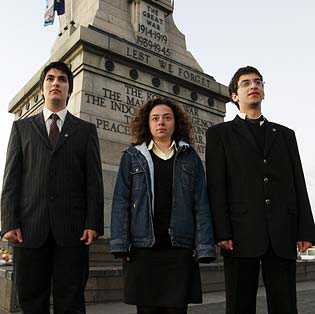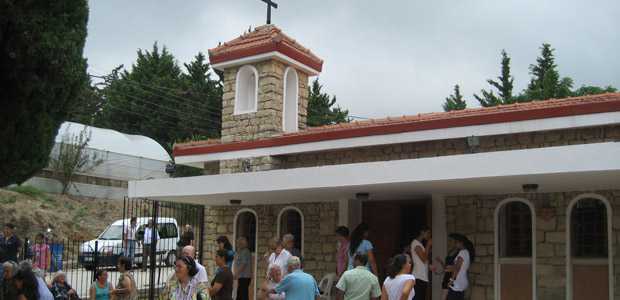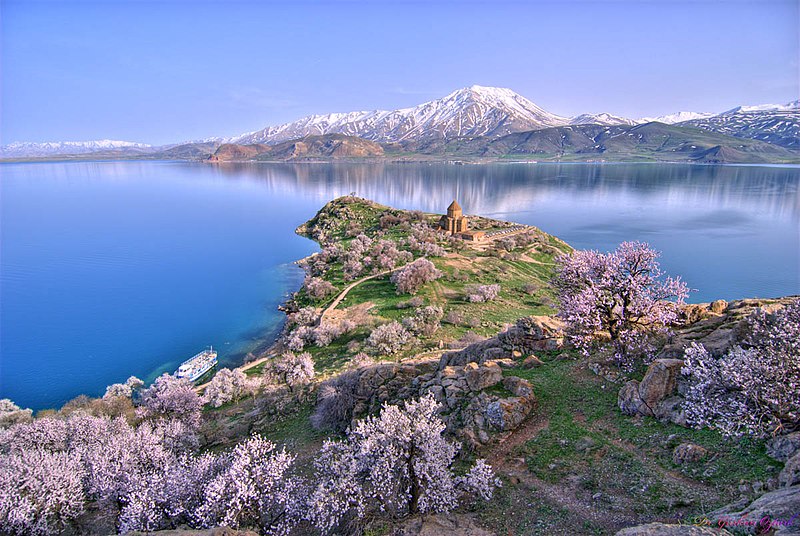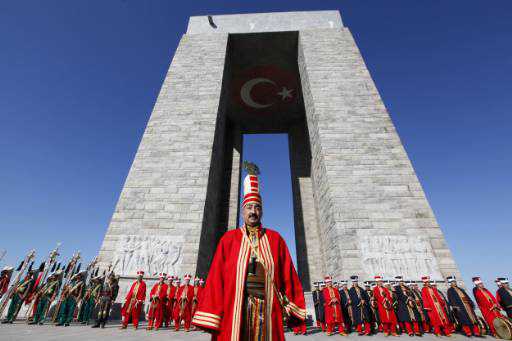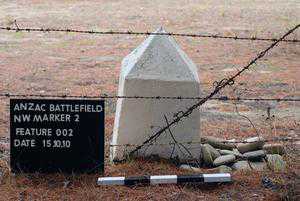The World War I battlefield of the Gallipoli campaign, where throngs gather each April to remember the fallen, is a place of lore, an echo of ancient warfare that took place on the same soil. Now researchers are mapping dugouts, trenches and tunnels in the most extensive archaeological survey of a site whose slaughter helped forge the identity of young nations.
Armed with old maps and GPS technology, the experts from Turkey, Australia and New Zealand have so far discovered rusted food cans, unused bullets and their shell casings, and fragments of shrapnel, Ottoman-era bricks with Greek lettering, ceramic rum flagons of Allied soldiers and glass shards of beer bottles on the Turkish side. They announced early findings ahead of annual commemorations on the rugged peninsula on Sunday and Monday.
The chief aim is to gain a detailed layout of a battlefield whose desperate trench warfare, with enemy lines just a few dozen meters (yards) apart in some places, has been recounted in films, books and ballads, acquiring a legendary aura in the culture of its combatants.
“It will hasten a broader understanding of what went on at Gallipoli,” Richard Reid, a researcher and author of the book “Gallipoli 1915” said of the government-funded investigation. “It will help us as nations that are always interested in trying to preserve what heritage we have.”
There is heightened interest in the battle, especially among Turks who are showing more pride in their past, buoyed by economic and diplomatic advances after decades of internal strife. Australia and New Zealand mark the occasion with a national holiday on Monday, holding dawn services and closing off downtown areas for marches of veterans of all conflicts.
Before dawn on April 25, 1915, an Allied expedition under British command landed at Gallipoli on the Aegean Sea in a bid to reach Istanbul and open a sea route to Russia, an ally whose troops were wilting on the eastern front. But Ottoman armies, allied with Germany, dug in and forced their adversaries to withdraw after a nine-month campaign.
About 44,000 Allied soldiers died, and at least twice as many perished on the Turkish side. Hundreds of thousands more were wounded or suffered debilitating fever, diarrhea and dysentery.
For Turkey, the terrible losses are central to the staunch nationalism that underpins its regional ambitions today, and the battle made a hero out of an Ottoman army officer who led Turkey to independence in 1923. Mustafa Kemal Ataturk imposed a secular vision that gave the state authority over Islam, a legacy that dominates the divisive politics of modern Turkey.
“I am not ordering you to attack. I am ordering you to die,” the steely commander is said to have told a regiment that was eventually wiped out. “In the time which passes until we die, other troops and commanders can take our place.”
During the battle one night, local lore says, the light of a star and the crescent moon shone on the blood-soaked ground, forming the design of what became Turkey’s red and white national flag.
In recent years, some of Turkey’s founding “myths” have been undercut, among them the idea of a tight-knit Turkish identity that ignored the existence of ethnic Kurds and other minorities, said Kerem Oktem, author of “Angry Nation: Turkey since 1989,” a book about the country’s erratic transition from military to democratic rule.
“Gallipoli remains “one of the important, overarching, big, symbolic moments,” he said.
For that reason, Oktem said, neither the current Islam-based government nor secular nationalists who oppose it want to “devalue or challenge” the idea that Gallipoli was a glorious victory, despite debate about its military significance.
Australia and New Zealand regard Gallipoli with equal reverence, noting the bravery and loyalty of soldiers whose British commanders considered troops from the former colonies to be untested and of poorer quality. It forged a self-image of determination, irreverence and “mateship” that is referred to as the Anzac spirit, after the Australia and New Zealand Army Corps.
The fighting happened near the mouth of the Dardanelles strait, part of a conduit between the Mediterranean Sea and the Black Sea. The Turkish military occupied the strategic site until 1973, when it became a national park. Memorials and cemeteries at the site discouraged thoughts of potentially disruptive fieldwork.
The new study does not involve excavation, instead using satellite-based technology to map battle positions over gullies, dense vegetation and limestone cliffs.
“Forestation had changed the natural geography of the battlefield, even of trenches and pits,” said Mithat Atabay, a history professor at Canakkale Onsekiz Mart University and one of five Turks on the 14-member team. In 1994, he said, “a huge part of the forest burnt down, and the zone suffered further damage.”
In October, the researchers mapped four kilometers (2.5 miles) of trenches, many of them barely visible, at locations including Johnston’s Jolly and Quinn’s Post, names bestowed by Allied troops. They inspected Turkish positions known as Kirmizi Sirt, or Red Ridge.
“The war on the surface was only one element of the struggle,” the team said in a report. “A constant underground battle developed; tunneling became a major preoccupation on both sides of the line, for both offensive and defensive reasons.”
Mapping data is entered in a digital database that can be compared with information from other sources, including maps used in the 1915 landings and Ottoman-era documents. Fieldwork resumes in September, and is expected to continue, with the help of ground-penetrating radar and aerial photographs, until the campaign centenary in 2015.
Charles Bean, an Australian journalist who covered the conflict and surveyed the battlefield just after the war, wrote about the grudging respect that was said to have developed between the underdog enemies. In an early 1916 dispatch, he recalled a memorial built by an Australian.
It was, he wrote, “a little wooden cross found in the scrub, just two splinters of biscuit box tacked together, with the inscription ‘Here lies a Turk.’ The poor soul would probably turn in his grave if his ghost could see that rough cross above him. But he need not worry. It was put there in all sincerity.”
The remains of the ancient city of Troy lie near the Gallipoli peninsula. Alexander the Great led an army through the region. So did Persian emperor Xerxes I. The Greek historian Herodotus referred to the place in his chronicles.
“The Allies were really the last, I suppose, military expedition to try to take this particular strip of land,” said Chris Mackie, a classics professor at La Trobe University in Melbourne, Australia, and one of the Gallipoli surveyors. “But there were plenty before them.”
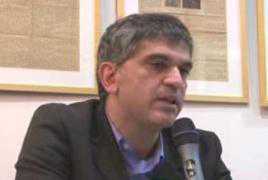 PanARMENIAN.Net – Gaidz Minassian, associate researcher at the Foundation of Strategic Research, said that the agreement between Turkey and Brazil on Iran, in 2010, opened a new stage of negotiations between the U.S. and Turkey.
PanARMENIAN.Net – Gaidz Minassian, associate researcher at the Foundation of Strategic Research, said that the agreement between Turkey and Brazil on Iran, in 2010, opened a new stage of negotiations between the U.S. and Turkey.
